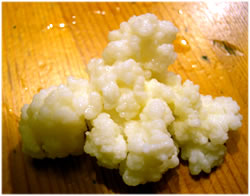 This week between Christmas Day and the New Year, I am working, but I am working from home. I'm trying to get some of the "big picture" things done for which I never seem to have time in an average ministerial week - a website project on social action in our church, some work for a denominational committee on which I serve, and - last, but most certainly not least - some planning for my upcoming sabbatical.
This week between Christmas Day and the New Year, I am working, but I am working from home. I'm trying to get some of the "big picture" things done for which I never seem to have time in an average ministerial week - a website project on social action in our church, some work for a denominational committee on which I serve, and - last, but most certainly not least - some planning for my upcoming sabbatical.That's right! I'm currently in my 5th year of ministry at this church, and according to my letter of call I am to take a sabbatical after my 5th, but before my 7th year of service. That would be during my 6th year, for those unaccustomed to the oddities of letter-of-call language.
So, today was a fun day as working-at-home days go, since I spent much of it planning what I'd like to try to do for five months beginning on January 1, 2007.
Sabbaticals are neat things, from what I've heard. They're intended for rest and renewal - they're not vacations, but neither are they work. The idea of a ministerial sabbatical is that one gets to temporarily leave behind the day-to-day responsibilities of pastoring and preaching and take up instead some new way of living that restores one's soul and makes one's heart to sing.
And nothing makes my heart sing more than cooking.
So, here's the first draft of a plan for my 22 weeks of promised renewal:
1 week OFF at the beginning
15 weeks at culinary school, in a culinary certificate program, 19 hours per week
1 week during culinary school vacation traveling to someplace warm - my beloved's fondest desire every winter, not as yet fulfilled
2 weekends plus 1 full week at a zen retreat center.
3 weeks near the end to do whatever I darn well please, including, very possibly, absolutely nothing
1 week OFF at the end
One of the best parts of this plan as far as my beloved and I are concerned, is that - with the exception only of the 2 weekends of zendo - we will have, for 5 glorious months, the sort of "normal" weekend about which ministers and their families usually only get to dream. Culinary school is in session only 3 days a week, and so every weekend will be a 4 day weekend for me!
I'll get to cook - better yet, learn something about cooking. And I'll get to meditate: I'll meditate on cooking, I'll meditate while cooking, I'll even cook while meditating.
To help me focus on my sabbatical, I've been reading some today about Zen cooks. The picture at top, left is the characters for tenzo - the zen cook. The office of tenzo is one of the great Temple offices in Zen buddhism. The tenzo is responsible for feeding everyone at the zendo. The ancient mandate of the office of tenzo is this: "Putting the mind of the Way to work, serve carefully varied meals appropriate to each occasion and thus offer everyone the opportunity to practice without hindrance."
In short, cooking as spiritual practice. And cooking to feed the spiritual practice of others. There's a great dharma talk by a tenzo - Ven. Jinmiyo Renge osho-ajari - at the White Wind Zen Community website: www.wwzc.org/dharmaTalks/BraisingTheMindofTheWay.htm.
And from that talk, a wonderful quote (about cooking, and possibly also about sabbaticals) to close out this post:
"If we only ever choose what is most habitual for us, the staleness of the same thoughts and feelings and storylines that we go over and over and over even though we already know them all, this is a bit like sitting down at a banquet table laid with a wonderful feast. But instead of participating, we do not even look up. We sit clutching a plastic Tupperware container filled with three-day old macaroni and cheese and pick at it with a plastic fork."
Wake up to the feast that lies before you, people! Wake up! Wake up!



 cheese, egg yolks, milk, and shaved black truffle. Then, thus fortified, we began working on the rest of the meal: a truffled lobster risotto, grilled asparagus with saffron aioli, and a simple salad of mesclun with a truffle-infused sherry wine vinagrette.
cheese, egg yolks, milk, and shaved black truffle. Then, thus fortified, we began working on the rest of the meal: a truffled lobster risotto, grilled asparagus with saffron aioli, and a simple salad of mesclun with a truffle-infused sherry wine vinagrette.





 You can learn more about SuperFoods and their benefits at
You can learn more about SuperFoods and their benefits at 












